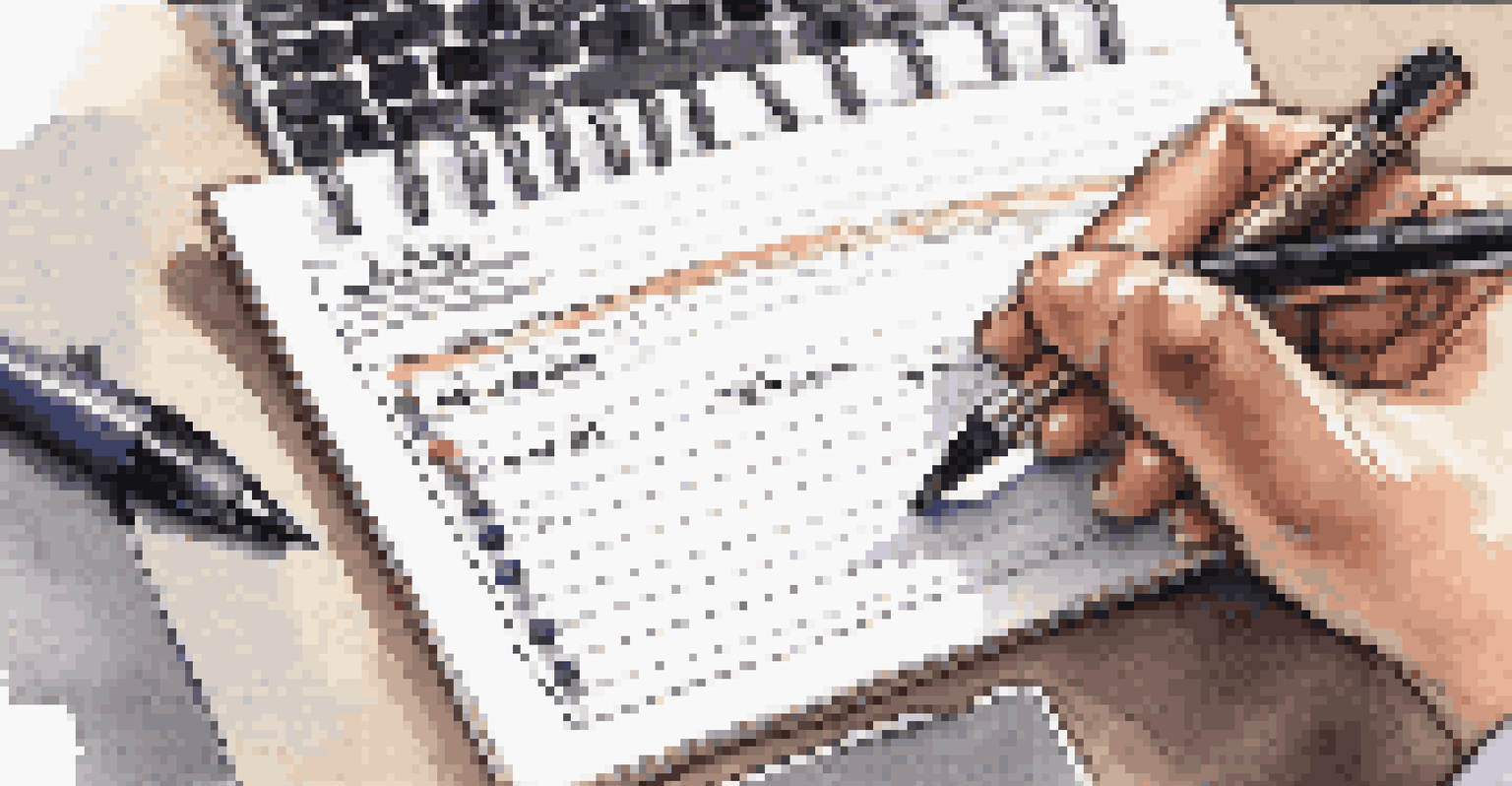Effective Meeting Practices: Communicating for Success

Understanding the Purpose of Your Meeting
Before scheduling a meeting, it's essential to clarify its purpose. Are you brainstorming ideas, making decisions, or sharing updates? Defining the goal helps set the tone and direction for the meeting.
Meetings are a symptom of bad organization. The fewer meetings the better.
When everyone understands the objective, it fosters a more focused discussion. Participants can come prepared with relevant insights and questions, making the meeting more productive.
Moreover, a clear purpose can prevent unnecessary meetings. Sometimes, an email or a quick chat can suffice, saving everyone time and energy.
Creating a Clear Agenda for Your Meeting
An agenda acts as a roadmap for your meeting, outlining the topics to be discussed and the time allocated for each. This helps keep conversations on track and ensures that all necessary points are covered.

Distributing the agenda ahead of time allows participants to prepare adequately. They can gather their thoughts and bring relevant data or materials, which enhances the overall quality of the discussion.
Define Meeting Purpose Clearly
Clarifying the purpose of a meeting ensures focused discussions and prevents unnecessary gatherings.
Additionally, stick to the agenda during the meeting. If new topics arise, consider parking them for later to respect everyone’s time and maintain focus.
Encouraging Participation from All Attendees
A successful meeting thrives on diverse perspectives, so encouraging participation is key. Create an inviting atmosphere where everyone feels comfortable sharing their thoughts and ideas.
The most important thing in communication is hearing what isn't said.
To facilitate this, consider using techniques like round-robin sharing or asking specific individuals for their input. This way, quieter members have an opportunity to contribute without feeling pressured.
Remember, the more engaged everyone is, the richer the discussion will be. This collaborative spirit can lead to innovative solutions and stronger team bonds.
Leveraging Technology for Better Meetings
In today’s digital world, technology can significantly enhance meeting effectiveness. Tools like video conferencing, collaborative documents, and project management software streamline communication and keep everyone connected.
For remote teams, video calls can help bridge the gap, allowing participants to read non-verbal cues and maintain a personal connection. Consider using platforms that allow screen sharing and real-time collaboration for more interactive sessions.
Create and Stick to an Agenda
A clear agenda serves as a roadmap, helping to keep conversations on track and ensuring all topics are covered.
However, be mindful of tech fatigue. Ensure that the tools you choose genuinely add value to the meeting rather than complicating it.
Time Management: Respecting Everyone's Schedule
Time management is crucial for effective meetings. Start and end on time to demonstrate respect for everyone's schedules and maintain a professional atmosphere.
Consider setting a time limit for each agenda item to ensure that discussions remain concise and focused. This encourages participants to get to the point and helps avoid tangents.
If a topic requires more time, schedule a follow-up meeting instead of dragging the current one out. This keeps the energy up and allows for a more productive discussion later.
Documenting Meeting Outcomes and Action Items
Taking notes during meetings is vital for capturing key points, decisions made, and action items assigned. This documentation serves as a reference for attendees and helps keep everyone accountable.
After the meeting, distribute a summary that includes these details. This ensures that everyone is on the same page and understands their responsibilities moving forward.
Follow Up on Action Items
Regular follow-ups on action items maintain momentum and accountability, fostering a collaborative team environment.
Additionally, documenting outcomes helps identify trends over time, allowing teams to refine their meeting practices and improve overall effectiveness.
Following Up on Action Items and Outcomes
Following up on action items is essential for maintaining momentum and ensuring accountability. Regular check-ins can help team members stay on track and address any challenges they may encounter.
Consider using project management tools to track progress on these action items. This not only keeps everyone informed but also fosters a sense of teamwork and collaboration.

Moreover, celebrating small wins along the way can boost morale and motivate team members to continue working towards their goals.
Evaluating Meeting Effectiveness for Continuous Improvement
After several meetings, take a step back to evaluate their effectiveness. Solicit feedback from participants to understand what worked well and what could be improved.
Consider asking questions about the meeting's structure, engagement levels, and overall satisfaction. This feedback can provide valuable insights into how to enhance future meetings.
By continuously refining your meeting practices, you not only improve communication but also foster a culture of collaboration and respect within your team.